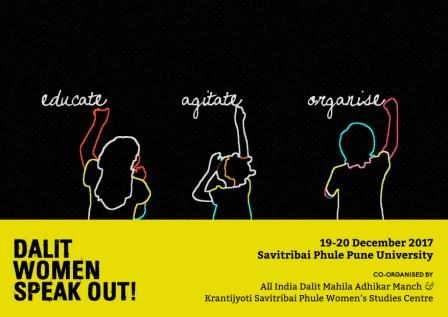Dr Amritpal Kaur
 Identities are culturally located historical formations, open to reinterpretation and dispute. They are culturally, socially and psychologically constructed delusions that tend to reinforce a state of emotionalism on the human self. Nationality, religion, class, caste, race, gender and all are intrinsically responsible for defining the boundaries of human identity.
Identities are culturally located historical formations, open to reinterpretation and dispute. They are culturally, socially and psychologically constructed delusions that tend to reinforce a state of emotionalism on the human self. Nationality, religion, class, caste, race, gender and all are intrinsically responsible for defining the boundaries of human identity.
Most of the identities are acquired and learned after birth, and thus are open to reassessment. But, the gender binaries are the most difficult to overcome as they are considered to be innately linked with the biological sex. The term gender was first used by psychologist and sexologist John William Money has all those things that a person says or does to disclose himself or herself as having the status of a boy/man or girl/woman.
It was in 1970s that the feminist scholars adopted the term gender as a way of distinguishing “socially constructed” aspects of male and female differences from biologically determined aspects (sex).
Sex is the biological classification that refers to the physical differences between people based on their genitalia and chromosome composition. Gender identities refer to personal identification with a particular gender. Most of the cultures identify with gender binaries i.e male and female, and those existing outside of it are termed as non-binaries or transgenders. It is interpreted worldwide that due to biological differences a set of socially acceptable behaviours that are appropriate for both were created and they determine their different access to resources, rights, and power in society. These differences tend to favour men creating gender inequalities.
The assignment of gender involves taking into consideration both physiological and biological attributes followed by the imposition of socially constructed conduct. Although a persons’ sex as a male or female stands as a biological fact that is identical in all cultures, what varies cross culturally is what that specific sex means in reference to a person’s gender role as a woman or a man.
However, the gender identities become a problem when they attributed masculine and feminine characteristics to a fundamental biological sex, providing a foundation for the establishment of a hegemonic gendered system. Individuals are allowed to socialize and flaunt these attributes within institutions such as family, the state and the media only if their attributes fall within the society’s expectations of acceptable gender attributes.
Such a notion of gender then becomes normalised into a person’s sense of self, constructively imposing a gendered social category upon a sexed body.
Feminine and masculine attributes are a patriarchal construct that define the sexual boundaries for both women and men. The feminine traits like humility, gentleness, empathy, sensitivity, fragility, shyness have been used to define her sexuality as less assertive or simply numb. Masculinity being a polar opposite construct was required to tame femininity by associating it with traits like courage, strength, leadership, independence and sexual aggression. As long as both cling to feminine and masculine attributes, the patriarchal setup will continue to oppress women.
The real problem arises when religions add fuel to the fire by legitimating these gender constraints as fixed male and female identities. In fact most of the religions have survived by ensuring that the notion of femininity is kept alive as an innately inherent trait of a woman’s existence. The concept of chaste or pativrata wives as their “stri dharma” was one of the most successful ideologies constructed by any patriarchal system (Brahmanical patriarchy), in which women themselves controlled their sexuality and believed that by doing so, they have gained power and respect.
The fundamental motive behind the notion of stri dharma was to tame womens’ sexuality in order to organize their maternal power. By ritualising a woman’s sexuality, endogamy has sustained itself through centuries, which is an intrinsic factor in the maintenance of the ritual as well as blood purity of the caste (male vansha).
The marriage system in Indian culture is not a reciprocal one but based on subordination of women. It is not based on mutual love and respect for one another as an individual. It is motive-ridden, the motive being to sustain endogamy by ritualising women’s feminine prowess in order to maintain the caste system. The real problem is not the justification of identity constructs but their generalised acceptance without doubting their role in constructing a respectable man-woman relationship.
The majority of women don’t realise that gender constructs were created to limit their intellectual proficiency.
The point to ponder upon here, is whether these gender binaries have been able to define the man-woman relationship in a constructive way especially when most of the religions consider femininity to be weak and subordinate to masculinity? How can a relationship between strong and weak be called a humanly harmonious one? Can Buddhism provide us a better and rational way to look at the man-woman relationship? We can find the answer only when we are able to understand the Buddhist perspective on the problem of considering self as a persistent unchanging entity and why and how this self falls prey to constructed notions of identities. For this, we need to delve into the fundamental relationship between three characteristics of Buddhism:-
1) Duḥkha (sorrow)
2) Anicca (impermanence)
3) Anatta (no soul or non self)
Duhkha is a common word for sufferings which include impermanence, dissatisfaction, frustration, anxiety and refers to our inability to live happily. The reason for our sorrows or unhappiness is the belief that our self is a persistent unchanging entity that is separate from the world. This socio-religious and psychological construct of a separate “I” or self creates an unconquerable ego which, being ungrounded, results in perpetual compulsion of self-centredness.
The self is composed of transient processes representing habitual ways of perceiving, feeling, thinking, acting and reacting. Their interaction produces a self awareness that seems to be separate from what it is aware of. Being a conditioned construct, the self is always anxious, insecure and hence needy and wanting to acquire more. This insecurity is constantly fed from outside and we eventually learn to cling to the materialistic as well as symbolic realities such as class, caste, race, gender and nationality.
We tend to stabilize our insecure sense of self by identifying with something outside.
Because of an insecure ego or self, most of the personal problems are self induced. Likewise, many social problems can also be traced to group egos. Due to internal anxiety we learn to hold on to our external identities and start discriminating ourselves inside as being different from the others outside. The delusional identity of the inside that considers itself to be separate from the outside, cannot exclude the outside as it is required for its construction. By amalgamating our distorted and fictitious sense of lack with others’ sense of lack, the group egos feel empowered and liberated. Whatever relief groupism provides is temporary, because our sense of lack still persists (individually and collectively) because we do not realise where it comes from.
According to Buddha, our basic delusion is the self, i.e the sense of separation between ourselves and the rest of the world which has created self centredness or individualism. All personal identities are conditioned constructs that never quite achieve the stable unity they aspire to. Being constructed, identities are vulnerable. The concrete human self is the focus of Buddha’s teachings.
The contemporary ideologies of the Buddha’s time i.e the materialistic (Sankhya and Lokayata) and idealistic (Upanishadic) as well as the latter institutionalised religious ideologies are deterministic and objectivist. They see the subjective individual self as a derivative from a larger being, whether materialistic or spiritual. Most of these focus on the relation of the human self with the universal reality that is beyond. This relation is directed outwards while Buddhism believes in healing the self and shedding assumed identities. Buddhism doesn’t believe that in order to understand suffering one has to accept or understand any ultimate reality and find ways to liberate oneself.
In Buddhism, the world is transitory without essences and so is any essential soul within the existing individual that is subject to rebirth. Because, it is transitory, it is full of sorrow and as the joys vanish they turn into sorrow. Buddha outrightly rejected the central theme of atman as a fixed and separate self or soul from the world forever wandering in search of the ultimate reality. This notion of atman ignores the human self as a person or individual but rather talks about a universal atman which is abstract. Love does exist here but as love for the universal, not for the individual as a person nor for the other.
This abstract self has no ethical responsibility towards the other and because of its abstractness individuals appear with attributes in various forms as man, woman, Brahman, shudra, white, black, etc.
Buddha described the individual personality as an aggregate of five Khandas – physical form, feelings, perceptions, volition and consciousness. This aggregate is not meaningless, but it is this very individual who begins by acting in self love and initiates concern for others. Buddha’s anti-self position or individualism is not in isolation but is better understood as individualism within society or other oriented individualism. The soulless individual personality is very concrete and specific, emphasising on the subjective emotionalism and necessity to respect one another. Buddhism does not refer to divinity, rituals, magic or worship but prescribes a compassionate behaviour in dispassion. This ethnicization has a larger meaning. It forms an intrinsic component of simple life rules as well as disciplined monastic life.
The basic delusion of a fixed self or ego has enormous implications on how we see gender identities. Buddhism emphasizes how our minds can become stuck in certain ways of thinking that cause problems for us. Buddhism being non-deterministic, does not believe in any root principle and hence does not believe that gender is fixed or absolute. Gender has no self nature and not all men and women have some masculine and feminine essence that defines them. Gender as a factor is bound to one’s mental state which can be changed by altering the mental state of an individual. Most religions argue that men and women are biologically different, therefore they cannot be the same and because they aren’t the same they can’t be equal. But in Buddhism we can argue that to be equal men and women need not be the same. Sameness should not be the criteria for equality.
There is no deterministic evolution from some ‘first cause’ but rather a process of development and change, with one thing proceeding after another. Thus it leaves a scope for free will and this also applies to human relations. The very ground of morality requires that there should be some freedom of choice, some ability in humans to overcome their conditioning and act in an ethical way. Buddhism is the only religion which concentrates on individual morality whereas other religions focus on group morality leaving no scope for an individual to think freely.
Establishment of male principle in equal measure with the female principle is the natural order of things. They should never exist in mutually exclusive relationships. There should not be an emphasis on one at the expense of the other for both are indispensable for maintaining harmony in the world. The patriarchal set up thrives by exploiting the biological differences between men and women by wrongfully constructing notions of femininity and masculinity, through which men and women are conditioned to believe that certain qualitative traits make them complete.
Anything shorter must not be accepted socially as well as psychologically. Social roles create problems as this does not allow them to choose a section in between them and leaves very little scope for people belonging to the category of the others or non-binaries to explore their existence rationally.
The problem of identities is not only social, cultural and religious, it’s also moral and spiritual, being related to the psychology of the human mind. The dominant culture (male) has complete and effective control over the collective consciousness, leaving less space for social transformation that can overthrow the divisive dominant culture. The spiritual /psychological transformation of consciousness that my self is never actually separate from others can have more real and long lasting results. But, no solution to the ills of gender attributes will be possible without addressing the fundamental lack built into its counterpart i.e masculinity.
The spiritual or psychological transformation involves rejecting the belief in a delusional self and working on the process of ethnicization of self through the Buddhist way of understanding the world and human mind. Once we learn to believe that there is no self, soul, ego or I, permanently residing inside us, we learn to dissociate ourselves from the desire to want more from outside. We eventually learn to live with compassion for others which is derived from the fact that if I love myself how can I not love the other? The degree of compassion depends directly on how much we become dispassionate towards overindulgence.
This compassionate self working in dispassion is a concrete self that eventually realises its interdependence and interconnectedness with others and takes the initiative in rejecting the self-destructive attributes based on projection and scapegoating. In Buddhism, men and women who cling to their masculine and feminine egos, cannot achieve nibbana.
Nibbana is the path that leads to the building of a concrete self, the one which has the potential to challenge the dominating cultures through intellectual stirring. Why do women in particular need to consider the Buddhist way as the only reliable path to destroy patriarchal structures? Because most religions do not consider intellectual awakening as her fundamental right. Buddha shook the patriarchal Indian society by recommending that females like men have the potential for enlightenment and are equally capable of realising the bliss and purification of mind in the process of nibbana, the same as men. They needed no masculine assistance or priestly intermediary to achieve buddhahood.
Buddhism offers women equal opportunities to learn the truth about self and identities, the truth that endurance must not be confused with transformation. It is the transformation of the mind that will liberate them and not endurance. For transformation, they need Buddhism. Only a transformed woman can see through the cultural lies of gender identities. Anti-essentialism of Buddhism provides egalitarianism that other religions lack.
Buddhism provides a rational (spiritual) alternative to the problem of identities and collective duhkha. If we wish to solve the problem of collective duhkha (in the form of social identities, groupism), we need to first consider the individual duhkha.
~
References
[1] Visible Identities – Race, Gender and the Self by Linda Alcoff.
[2] Gender Trouble by Judith Butler
[3] Buddhism in India: Challenging Brahmanism and Caste by Gail Omvedt
[4] Gendering Caste by Uma Chakravarti
[5] The Essence of Buddhism by P. Lakshmi Narasu
[6] The Buddha And His Dhamma:- Dr B.R Ambedkar
~~~
Dr Amritpal Kaur is a practicing Oral and Dental Surgeon (BDS) from Jalandhar, Punjab. She is also a writer (on Ambedkarism, Buddhism and Feminism), a Social Thinker and founding member at National Council of Women Leaders.










